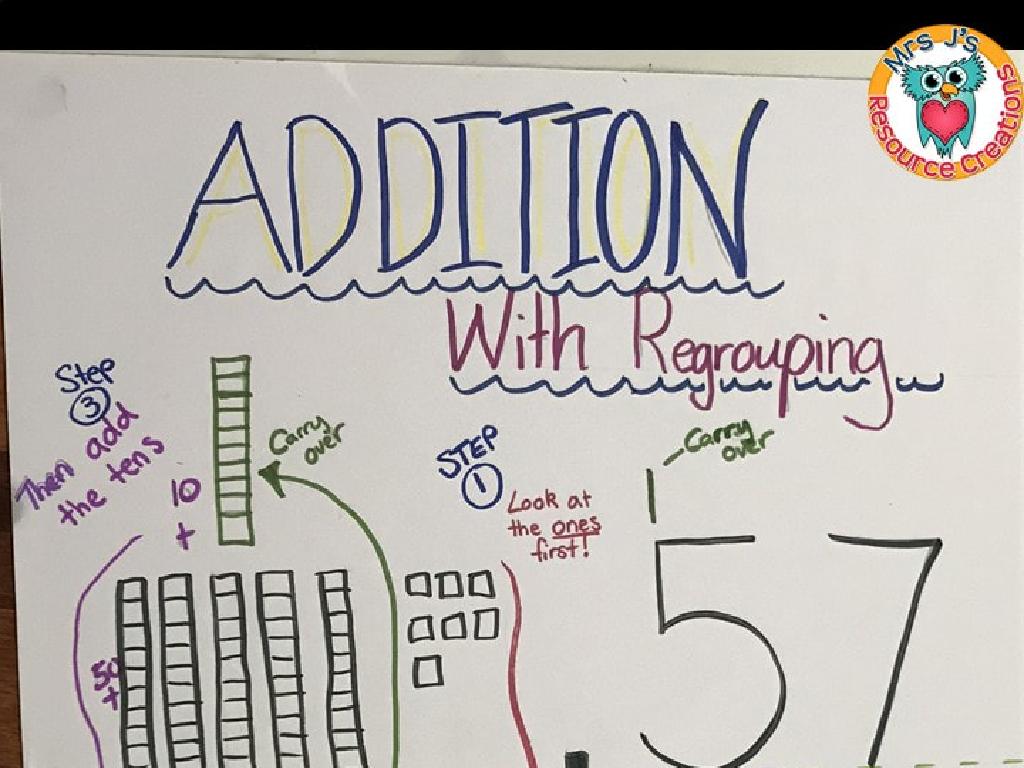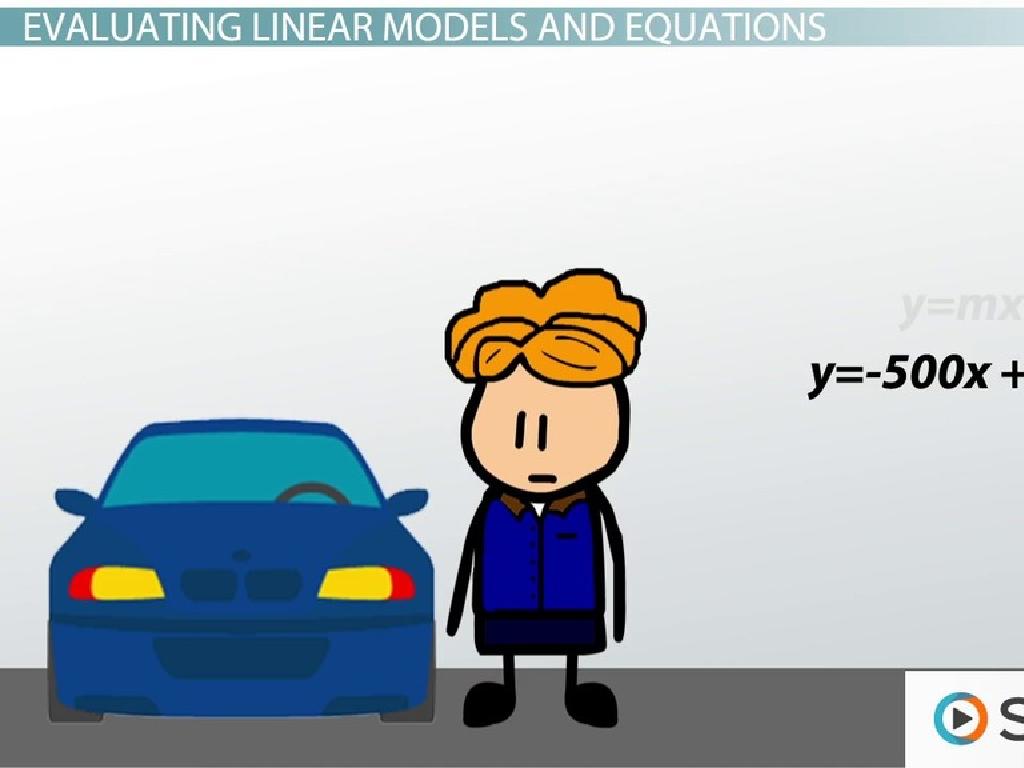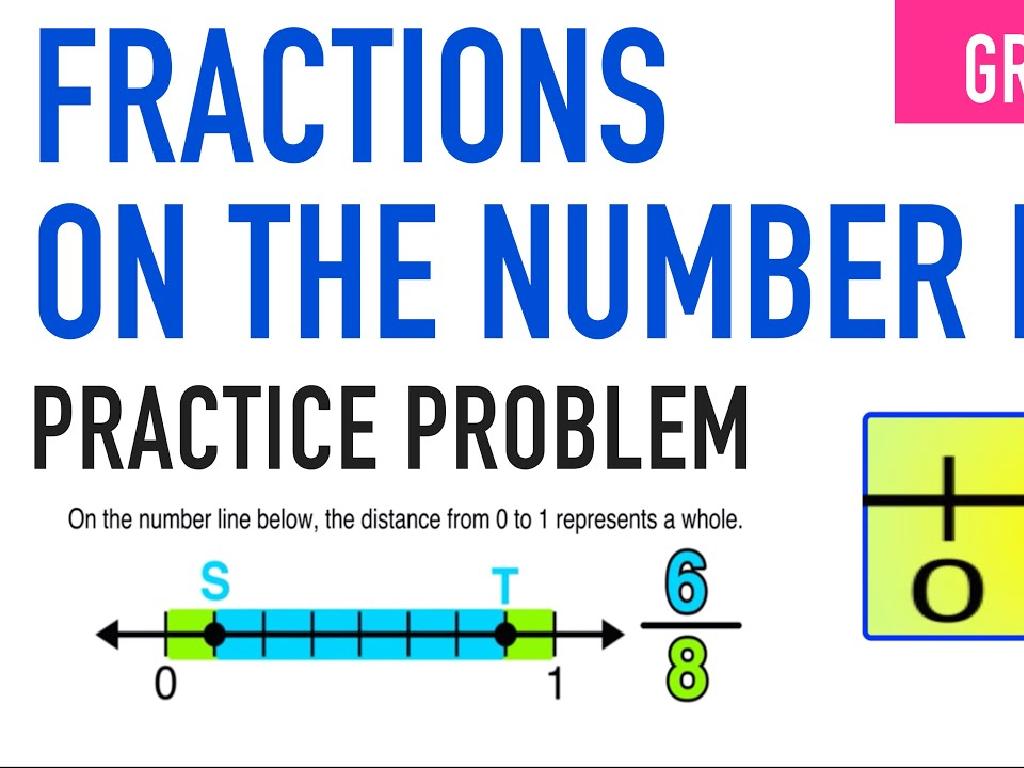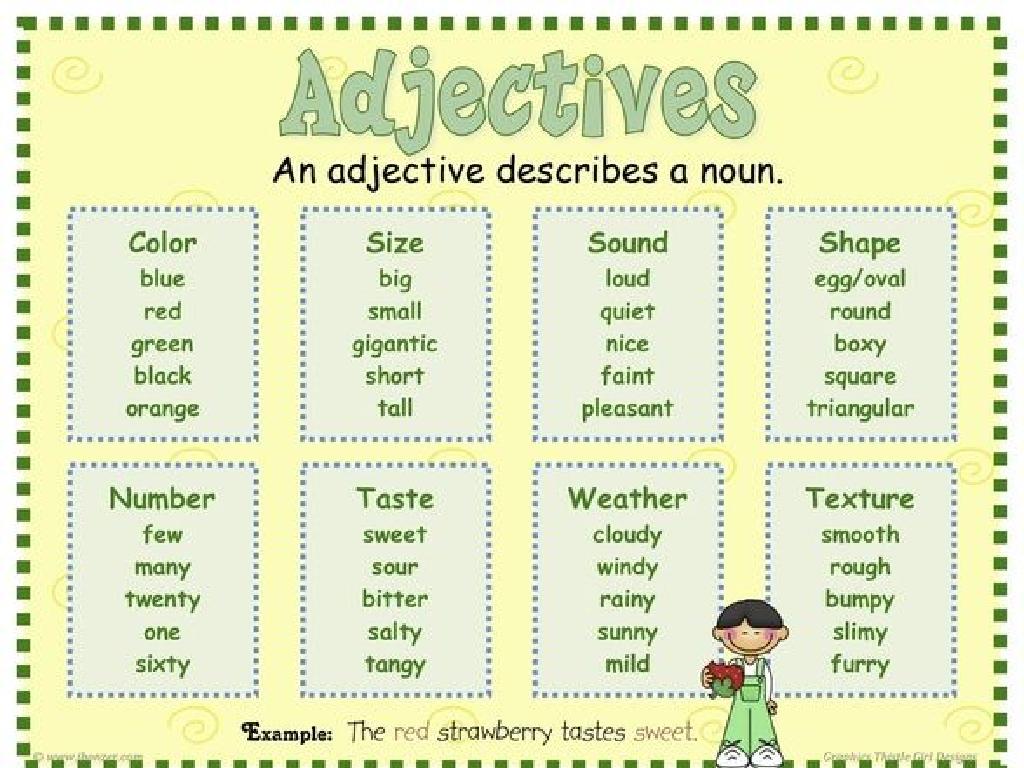Predict Heat Flow
Subject: Science
Grade: Second grade
Topic: Heat
Please LOG IN to download the presentation. Access is available to registered users only.
View More Content
Welcome to the World of Heat!
– Greetings, bright minds!
– Today’s topic: How heat moves
– Heat makes us feel warm
– Heat is the reason we feel warm or cold
– Observing heat in the sun
– Standing in the sun makes us feel warm because of heat
|
Begin the class with a warm welcome and introduce the topic of heat movement. Engage the students by asking them to share their experiences with heat, such as feeling warm in the sun. Explain that heat is a form of energy that can move from one place to another, and it’s the reason we feel warm or cold. Use the example of standing in the sun to illustrate how we can feel heat directly. Encourage the students to think about other situations where they experience heat, such as touching a warm cup of cocoa or feeling a breeze on a cool day. This will help them relate the concept of heat to their everyday lives.
Understanding Heat
– Heat is energy that warms things up
– Heat travels from one object to another
– Like when a spoon in hot tea gets warm
– The sun gives us heat
– It’s like the sun’s big warm hug to Earth
– Heat keeps our Earth cozy
|
This slide introduces the concept of heat to second-grade students. Begin by explaining that heat is a type of energy, something that is not seen but felt as warmth. Use relatable examples like feeling the warmth of the sun on their skin or how a metal spoon gets warm when placed in hot soup to illustrate how heat moves. Emphasize that the sun is our main source of heat, making our planet warm enough to live on. Encourage students to think of times they have felt warm and to consider where the heat came from. This will help them understand the practical implications of heat in their daily lives.
How Does Heat Move?
– Heat moves in three ways
– Conduction through solids
– Like a spoon getting hot in soup
– Convection through fluids
– Like warm air rising or water boiling
– Radiation through space
– Like feeling the sun’s warmth on your skin
|
This slide introduces the concept of heat transfer to second-grade students. It’s important to explain that heat can travel in different ways depending on the material it’s moving through. Conduction occurs in solids when they touch something hot. Convection happens in fluids (liquids and gases) where the warmer part moves up and the cooler part moves down. Radiation is a bit different because it doesn’t need a medium to travel through; it can move through empty space, like the heat we feel from the sun. Use relatable examples like a warm spoon in soup for conduction, a hot air balloon rising for convection, and the warmth of sunlight for radiation. Encourage students to think of more examples and discuss them in class.
Predicting Heat Flow
– Heat travels warm to cool
– Guess the direction of heat flow
– Will heat go from hot cocoa to an ice cube?
– Use examples to learn
– Like a spoon in hot soup getting warm
– Activity: Predicting heat’s path
|
This slide introduces the concept of heat transfer to second-grade students. Begin by explaining that heat is like an adventurer that travels from a place where there’s a lot of it (warm) to a place where there’s less (cool). Use relatable examples like a warm cup of cocoa cooling down or a metal spoon getting warm in hot soup to illustrate this concept. For the activity, present students with different scenarios and ask them to predict the direction heat will flow. This could include placing an ice cube in warm water, touching a cold windowpane, or leaving butter out on the counter. Encourage students to explain their predictions to foster critical thinking.
Exploring Heat Flow with Examples
– Ice cube on a warm sidewalk
– The sidewalk warms the ice, making it melt
– Warm cookie on a cool plate
– The cookie transfers its heat to the plate
– Heat moves from warm to cool
– Why ice melts & cookie cools
– Heat always travels from something warm to something cooler
|
This slide is designed to help second-grade students understand the concept of heat flow through relatable examples. Start by discussing the ice cube on a warm sidewalk, explaining that the heat from the sidewalk is absorbed by the ice, causing it to melt. Then, move on to the warm cookie on a cool plate, and describe how the cookie loses heat to the cooler plate, which results in the cookie cooling down. Emphasize that heat moves from warmer objects to cooler ones until there is no temperature difference. Encourage students to think of other examples where they have observed heat flow, such as cooling a hot drink with ice or feeling the warmth of the sun on their skin.
Hands-On Activity: Feeling the Heat!
– Experiment with warm and cold water
– Use hands to feel heat movement
– Heat moves from warm to cold areas
– Ensure water is safe to touch
– Discuss observations together
– Share what you felt during the experiment
|
In this hands-on activity, students will explore heat transfer by comparing the sensations of warm and cold water. Before the experiment, explain that heat moves from warmer objects to cooler ones. Prepare two containers, one with warm (not hot) water and one with cold water, ensuring the temperature is safe for children to touch. Have students place one hand in each container and then switch to feel the heat transfer. After the experiment, gather the students to discuss their observations and reinforce the concept that heat moves from the warm water to their hands and from their hands to the cold water. This activity will help them understand the basics of heat flow in a tangible way.
Class Activity: Heat Flow Art!
– Draw items that change temperature
– Add arrows to show heat direction
– Arrows point from warm to cooler areas
– Share your art with the class
– Explain your heat flow arrows
– Tell us why you think heat flows that way
|
This activity is designed to help second graders visualize and understand the concept of heat transfer. Provide students with drawing materials and ask them to illustrate objects that get hot or cold. Guide them to draw arrows to represent the direction they believe heat is moving. For example, from the sun to the ground, or from a cup of hot cocoa to the surrounding air. Once completed, create a sharing circle where each student presents their artwork and explains their reasoning behind the direction of the heat flow arrows. This will foster a discussion on heat transfer and help clarify misconceptions. Possible variations of the activity could include drawing a sun heating the Earth, a hand melting an ice cube, or a pot on the stove heating soup.
Conclusion and Review: Heat Flow
– Excellent work, young scientists!
– Heat travels from warm to cool
– Like a cup of hot cocoa cooling down
– Think of a heat flow example
– Maybe from our hands-on activities?
– Let’s review what we’ve learned
|
Today’s lesson was about understanding how heat moves from warmer objects to cooler ones. Reinforce the concept by reminding students of the practical examples and experiments conducted during the lesson. Ask them to recall instances of heat transfer, such as feeling warmth from a sunny window or noticing how a popsicle melts in their hand. Encourage them to share their observations and examples of heat flow from the class activities. This review will help solidify their understanding and give them confidence in explaining the concept of heat transfer in their own words.






